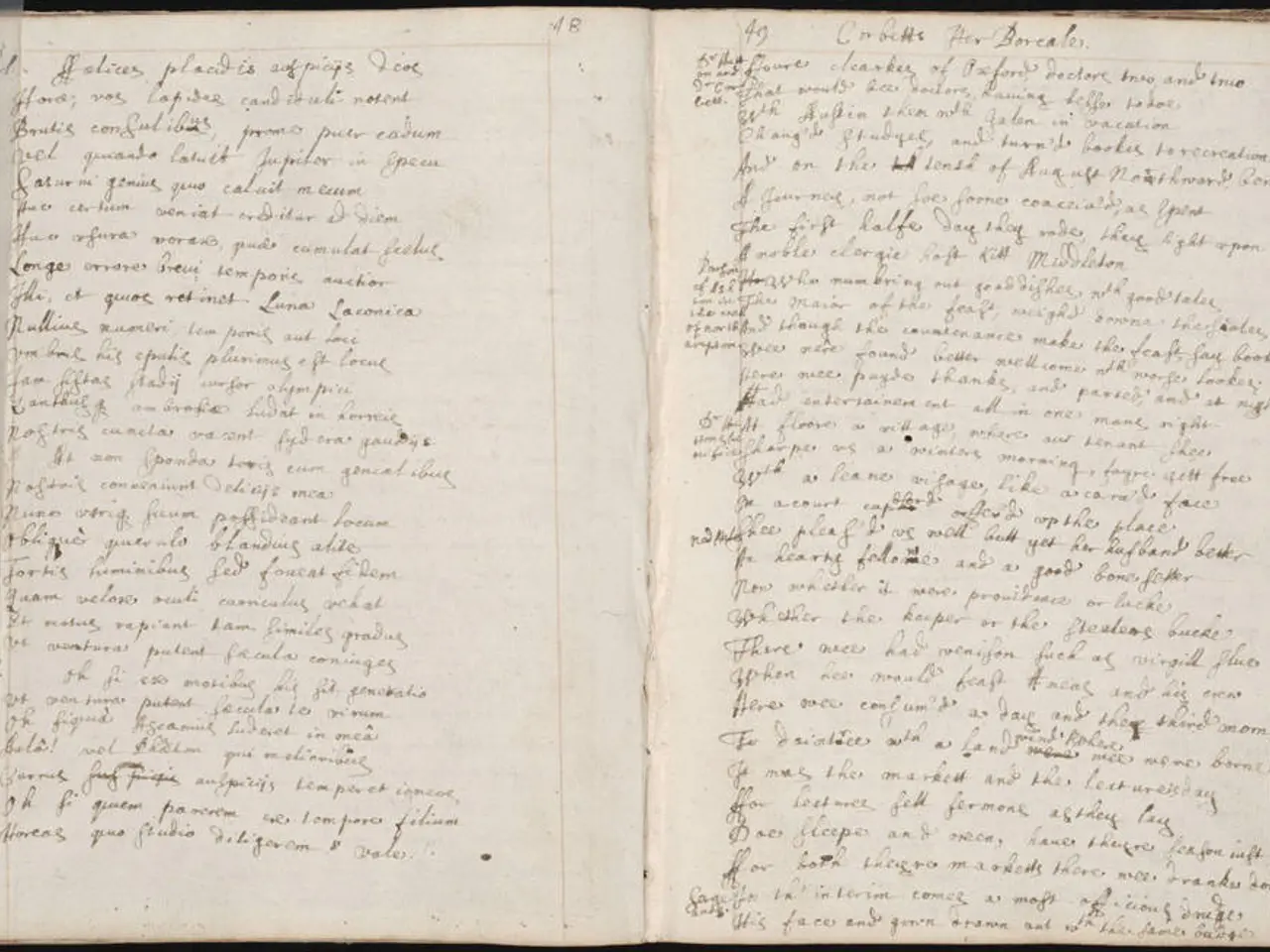Unveiling Creation of Tunes: A Step-by-Step Guide on Writing Melodies
In the world of music, melodies hold a special place, engaging our emotions and resonating deeply within us. This article explores six effective techniques for writing melodies in both songwriting and instrumental composition, bridging the gap between classical tradition and contemporary practices.
- Repetition and Variation
Repetition creates familiarity, while variation keeps the melody engaging without monotony. Classical composers often repeat a theme with slight rhythmic or harmonic changes, such as Beethoven’s Fifth Symphony motif development. In pop, artists repeat melodic phrases but alter instrumentation or harmony in different sections to maintain interest.
- Motif Development
A motif is a short, foundational musical idea that can be transformed and developed throughout a piece. Classical examples include the opening four-note motif in Beethoven’s Fifth Symphony, which shapes the entire composition. Modern pop sometimes builds songs around a catchy motive that evolves subtly across verses and chorus.
- Interval Jumps
Incorporating specific interval leaps (such as fourths or sixths) in a melody adds lift and emotional impact. In classical melodies, leaps can express drama or brightness (e.g., Mozart’s operatic arias). In pop, a single interval jump can make a hook more memorable, such as the perfect fourth in the chorus of Queen’s “Somebody to Love.”
- Use of Modes
Experimenting with modes beyond the major/minor system offers fresh melodic colours. Classical composers from the Renaissance and Baroque eras often wrote using modal scales. In modern pop, modes like Dorian or Mixolydian provide distinctive “flavors” for hooks, as seen in songs like “Eleanor Rigby” by The Beatles, which uses modal harmony to create a haunting melody.
- Improvisation over Chord Loops
Improvising melodies over repeating chord progressions is common in pop songwriting and jazz-influenced classical pieces. This spontaneity can yield natural, expressive melodies. Post Malone’s songwriting includes improvisation over beats to spark memorable tops-lines.
- Structuring around Hooks and Phrasing
Writing melodies with a clear hook—often the chorus in pop or a recurring theme in classical—helps create memorable music. Classical composers use phrasing to shape melodic lines dynamically, as exemplified in Mozart’s symphonies, while pop songwriting often starts melody writing from the hook to anchor the song’s identity.
Together, these techniques provide versatile tools to craft compelling melodies that resonate emotionally and memorably with audiences. By understanding and applying these methods, musicians can create melodies that captivate and move listeners, bridging the gap between classical and contemporary music.
For instance, the first two bars of "Amazing Grace" mark the nature of what the rest of the melody will be, with an upbeat from the fifth degree of the scale to the tonic note. The song was composed on a Major pentatonic scale, which does not have two of the notes of the Major scale, the fourth and seventh-degree. The melodic climax reaches the A flat note quickly but is compensated by the smooth melodic decay towards the C note on bar six.
When composing a melody, the composer should have a double vision upon the musical piece, considering both a broader view and better attention to detail. Within any scale, some notes are more stable than others, and the first, third, and fifth degrees are the most stable in a Major scale. A balanced melody exists when all contributing elements (harmony, rhythm, and melody) are combined in perfect harmony.
This article is intended for musicians with some previous knowledge in notation and harmony. The structural notes in a melody create a melodic framework that supports the linearity of the melody. The power of a balanced melody can influence the perception of the listener, and continuity, the general flow of effects built up by melodic intervals, rhythm values, articulation, and the duration and connection of ideas, plays a crucial role in maintaining this balance. The remaining degrees in a Major scale have a compelling tendency to go or "resolve" in the tonic triad notes.
The most remarkable features of the melody in Bach passacaglia and Fugue BWV 582 are the divergent melodic climax and the divergent harmonic climax. The rhythm is the skeleton and first organizer factor in a melody, and an upbeat allows a drone on the bass line to be the engine that dynamizes all the piece. Three contributing factors for a memorable melody are melodic contour, rhythm, and harmony.
By understanding and applying these techniques, musicians can create melodies that captivate and move listeners, bridging the gap between classical and contemporary music.
- In songwriting and composition, a melody can be made more captivating by employing the technique of melodic contour, whereby the melody's overall shape and direction are carefully designed to create a memorable impression, mimicking classical examples such as Bach's Passacaglia and Fugue BWV 582.
- To create melodies that resonate across musical genres, it's crucial to implement the method of rhythmic manipulation, as demonstrated in Beethoven's Fifth Symphony and modern pop songs, where altering rhythmic patterns helps maintain listener interest and expand the emotional impact of the melody.







